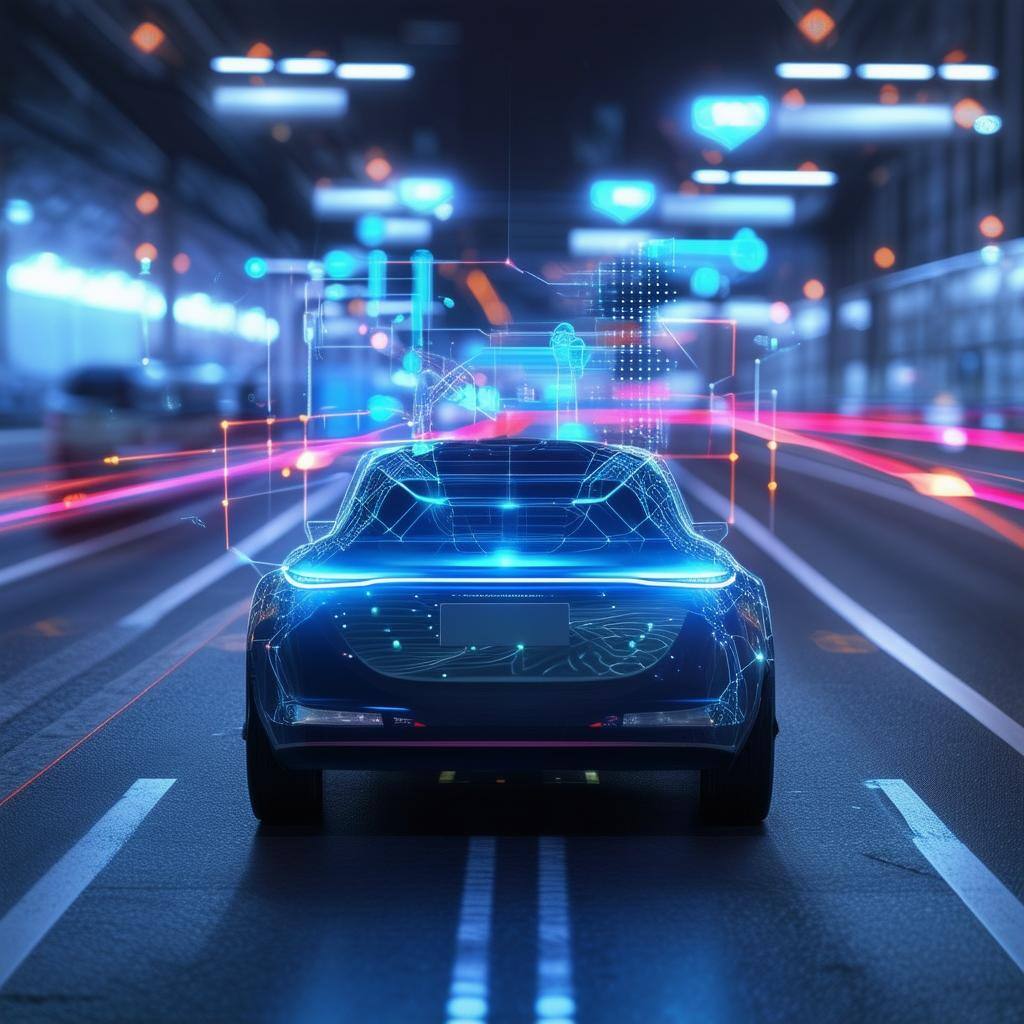AI for Autonomous Vehicles in Logistics
Transforming Logistics with AI-Driven Autonomy
Core AI Technologies Powering Autonomous Vehicles
AI-driven autonomous vehicles are reshaping the logistics industry by introducing precision, efficiency, and cost-effectiveness on an unprecedented scale. These vehicles leverage advanced algorithms and machine learning to optimize route planning, reducing delivery times by analyzing real-time data. Additionally, AI minimizes operational costs by reducing human errors and improving fuel efficiency while enhancing safety standards through advanced sensor systems that mitigate accidents caused by driver fatigue or error.
For a deeper understanding of how AI is revolutionizing autonomous vehicles and transforming logistics, watch the video How AI is driving the autonomous vehicle revolution. This resource delves into the cutting-edge technologies fueling this shift and highlights their practical applications in the logistics sector.
How AI is driving the autonomous vehicle revolution
Watch the video below to explore how AI is transforming the autonomous vehicle industry and its impact on logistics.
The Role of AI in Autonomous Vehicles
AI is the backbone of autonomous vehicles, enabling them to make real-time decisions, process vast amounts of data, and adapt to dynamic road conditions. AI applications include:

Sensor Data Processing
AI interprets inputs from cameras, LiDAR, and radar to understand the vehicle’s surroundings.
Decision-Making Algorithms
Autonomous vehicles use AI to navigate routes, avoid obstacles, and optimize driving patterns.
Predictive Maintenance
AI detects potential mechanical issues before they cause disruptions.Key Benefits of AI-Powered Autonomous Vehicles

Operational Excellence
Continuous vehicle operation (30% reduction in delivery times)
Real-time data processing
Maximum fleet utilization

Cost Optimization
Reduced fuel consumption
Lower maintenance costs ($1M annual savings)
Decreased labor expenses

Safety and Reliability
Reduced human error
Enhanced accident prevention (50% decrease in accident rates)
Consistent performance

Business Growth & Scalability
Easy fleet expansion
Quick market adaptation
Geographic scaling
Real-World Applications of Autonomous Vehicles in Logistics
How AI is Changing the Industry Landscape
Autonomous vehicles are no longer a futuristic concept—they are actively transforming the logistics industry today. By integrating artificial intelligence, companies across sectors are redefining how goods are transported, delivered, and managed. These innovations are not just improving efficiency but are also addressing key challenges like driver shortages, operational costs, and sustainability. Below are some of the most impactful applications of autonomous vehicles in logistics.
-
Retail Sector
Self-driving delivery vans equipped with AI are redefining last-mile logistics, ensuring timely and efficient delivery to customers.
-
E-Commerce Giants
Major e-commerce players leverage autonomous trucks to streamline warehouse-to-distribution-center transportation, improving overall supply chain efficiency.
-
Freight Companies
AI-powered autonomous trucks enable efficient, long-distance freight hauling, reducing driver fatigue and increasing productivity.
Challenges and Future Trends
Navigating Obstacles and Embracing the Future
While AI-driven autonomous vehicles offer numerous benefits, they also face challenges such as regulatory hurdles, high initial costs, and public trust. However, advancements in AI and vehicle automation continue to push the boundaries of what’s possible.
Future Trends
AI-Enhanced V2V Communication
Vehicles communicate seamlessly to avoid congestion and improve traffic flow.
Eco-Friendly Logistics
Electric autonomous vehicles reduce carbon emissions and operational costs.
Fleet-Wide Integration
AI will enable a fully autonomous logistics network, from warehouses to last-mile delivery.
The Competitive Advantage
Companies adopting AI-powered autonomous vehicles gain a significant edge over competitors still reliant on traditional methods. These businesses can promise quicker delivery times, consistent reliability, and greater cost-effectiveness—all of which are crucial in today’s consumer-driven economy.
Example:
Imagine a logistics company managing international shipments. By implementing autonomous vehicles equipped with AI, the company not only optimizes delivery routes but also predicts demand surges during peak seasons. This proactive approach allows them to allocate resources efficiently, outperforming competitors stuck in reactive workflows.
Why Choose AI for Your Fleet?
Market Leadership Through Innovation
Position your fleet as an industry leader by adopting AI-powered autonomous vehicles.
Enhance operational efficiency, reduce costs, and improve decision-making with advanced AI technology.
Enhanced Customer Satisfaction
Improve delivery accuracy, speed, and reliability through AI-driven autonomous vehicles.
Optimize routing and predictive maintenance for fewer delays, ensuring more satisfied customers.
Future-Ready Operations
Stay ahead of technological advancements and regulatory changes by future-proofing your fleet.
Prepare your fleet for the evolving logistics landscape with scalable, AI-driven solutions.

Frequently Asked Questions
What are the benefits of integrating AI-powered autonomous vehicles into my fleet?
Integrating AI-powered autonomous vehicles into your fleet offers numerous advantages, including:
- Operational Excellence: Autonomous vehicles reduce delivery times by up to 30%, optimize routes, and ensure maximum fleet utilization.
- Cost Optimization: Save on fuel, maintenance, and labor costs, potentially saving up to $1 million annually.
- Safety & Reliability: AI minimizes human error, reducing accident rates by 50%, while ensuring consistent vehicle performance.
- Business Growth: Scalable and easy fleet expansion with AI-driven vehicles allows for quick adaptation to market changes.
How does AI improve logistics with autonomous vehicles?
AI enhances logistics operations in several ways:
- Smarter Transportation: AI interprets real-time sensor data to make decisions, optimizing route navigation and avoiding obstacles.
- Predictive Maintenance: AI predicts vehicle issues before they cause disruptions, minimizing downtime and improving reliability.
- Efficient Fleet Management: AI automates fleet scheduling, resource allocation, and performance monitoring, boosting productivity and cutting operational costs.
What are the challenges of using AI in autonomous vehicles for logistics?
While AI in autonomous vehicles brings transformative benefits, there are some challenges to address:
- Regulatory Hurdles: Compliance with changing laws and regulations in various regions remains a key consideration.
- High Initial Costs: The upfront investment in autonomous vehicle technology can be significant.
- Public Trust: Gaining consumer and regulatory confidence in AI-driven vehicles is crucial for widespread adoption. However, advancements in AI and automation are rapidly overcoming these challenges, making the future of autonomous logistics promising.
For more in-depth answers, check out our full FAQ page
Transform Your Fleet Today
Ready to revolutionize your logistics operations? Partner with us to integrate AI-powered autonomous vehicles into your fleet. Talk to an Expert and take the first step toward an autonomous future.